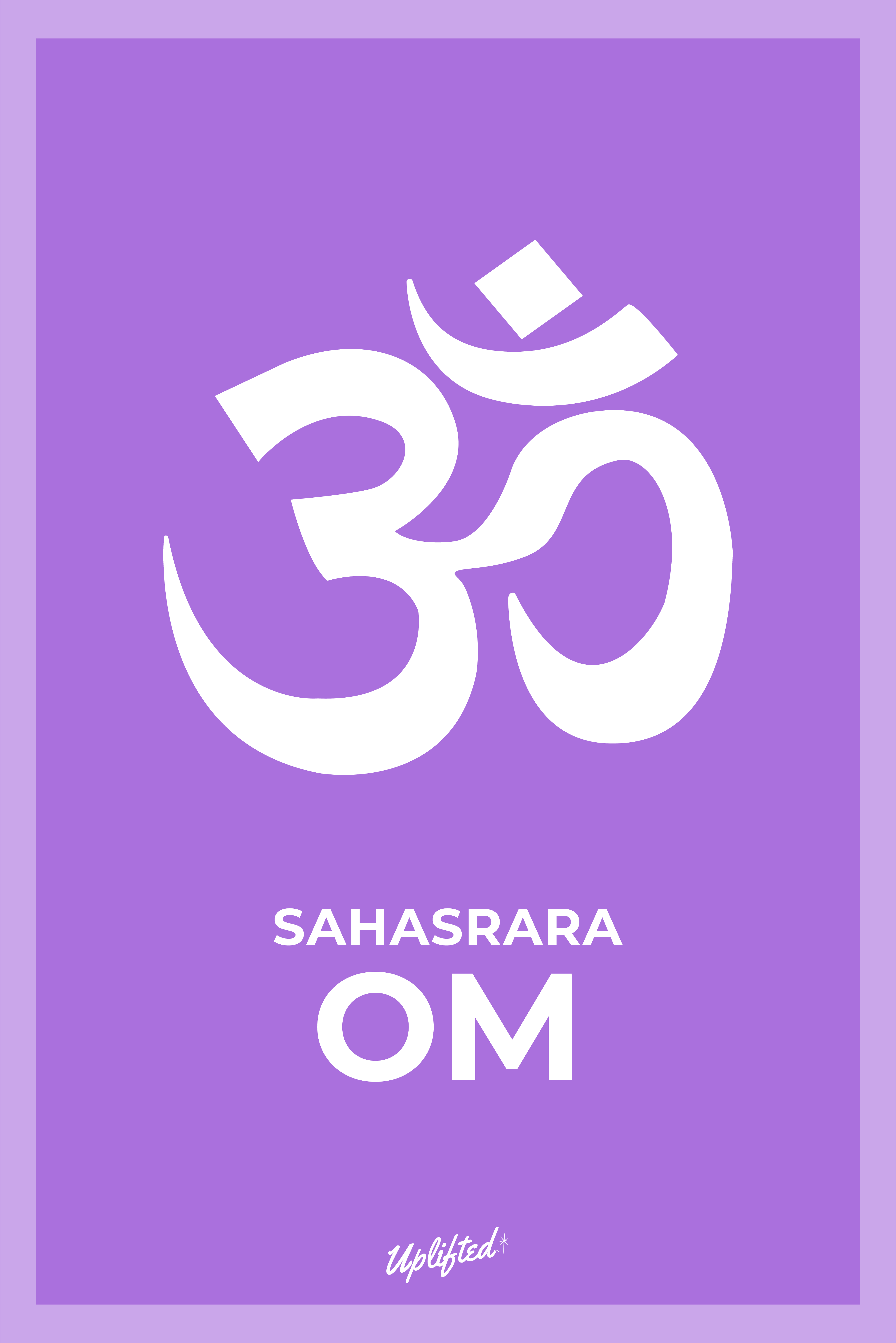
It seems like every yoga class, yoga studio, and yoga related brand plasters the symbol of om wherever they can or chant the sounds of om whenever there is more than one person around.
But what does it symbolize anyway? And what does this yoga term have to do with spiritual activities?
That’s what I’m here to break down.
I will share with you its ancient origins, common spellings and pronunciations, how it is used, and the om symbol meaning.
After all, it’s important to, at the very least, have a basic understanding of the most important sounds ever uttered in this realm.
Where Does Om Come From?
In sacred Hindu texts, the mantra Om refers to the Atman (the soul, self) and Brahman (the universe or the Divine) within all of us. It is also said to represent the Hindu elephant god Ganesha, who is the remover of all obstacles.

In the Sanskrit language, there are seed or bija mantras that are important symbols in meditation. The sound om is one of those bija mantras. The bija mantras are LAM (root chakra), VAM (sacral chakra), RAM (solar plexus), YAM (heart chakra), HAM (throat chakra) and OM (crown chakra). If you want to do a meditation for the chakras, you can chant all the bija mantras at each chakra, ending with OM.
The symbol AUM is made up of three different sounds and syllables “ahhh, oooo and mmmm.” While chanting om, you can feel vibration start in your belly, then come up to your throat and end up with a deep, vibration in your mouth. It originates from mysticism in Tibetan Yoga, and it is considered to be the most sacred, primordial sound.
AUM represents the divine energy of Shakti which relates to the Creator, the Generator and the Destroyer.
In other words, Brahma Vishnu and Shiva. The A stands for (Akaar), the U stands for (Ukaar) and the M stands for (Makaar). The reason that this mantra is so powerful is because the repetition of it can bring you to a trance-like state and higher consciousness.
As you can imagine, this has created a little bit of confusion about how this word is spelled. The aum symbol, ohm symbol, and om symbol are often used interchangeably. While in certain circumstances that is generally okay, when it comes to bija mantras, it’s important to differentiate between the aum symbol (ajna chakra) and ohm symbol (sahasara chakra).
You Might Also Like: Chanting Mantras: Unlock the Secrets of These Spiritual Formulas
How Is It Used?
Om is traditionally chanted at the beginning or end of a yoga practice. You can chant “om” alone three times, or say “Om Shanti Shanti Shanti” which means peace, peace, peace.
In a teacher training, Om will be one of the primary mantras that you work with. Chanting om teaches you how to hold your breath longer, and helps to quiet the mind.
You may have heard your teacher say “Om Namah Shiva” which means you are chanting to Lord Shiva. Many yogis also use their Japa mala beads to chant the symbol “om” 108 times. Om is said to be the sound of Brahman or the Supreme in Hinduism. Japa yoga helps keep the mind, body, and heart focused.
By chanting Om, we are invoking the vibration of the entire universe. Om vibrates at the frequency of 432 Hz, which is the same frequency found in nature. This frequency helps to calm the heart rate, ease stress and anxiety and is soothing and healing. This sound unblocks the throat chakra and unlocks spiritual wisdom within your crown chakra.
How To Chant Om
- Get in a comfortable position on the floor, using any cushions or pillows to sit on if needed.
- With your eyes closed, take a long, deep inhale through the nose and exhale to prepare.
- Inhale deeply again and on the exhale prepare to chant the syllable “ommmmmm”
- When you begin to lose your breath, seal the mantra chanting by bringing your lips together to make the “mmmm” sound.
- Enjoy the reverberations of the vibration and practice as many times as you would like. The reason we traditionally chant om three times is to connect to the body, mind, and spirit.
Om has the power to bring awareness to your spiritual practice and help you focus. It is also said to bring knowledge and connect you to all of creation with a sense of oneness. Connecting with this cosmic meditative sound helps bring conscious awareness into all that you’re doing as it quite literally puts you on the same vibration as the entire universe (that’s the whole oneness thing). The benefits also include bringing you to a more energized state, improving your concentration and helping you to let go of negativity.
Know that if you do not feel comfortable chanting om during a yoga class, you do not have to do it, just be respectful and mindful of the other students around you. Leaving early before the chanting is finished could be disruptive.
Plus, you don’t have to follow the teachings of the texts of Hinduism to enjoy the feeling of the vibrations passing through your lips 
Next Steps
- If you’re interested in practical kriya yoga as a way to improve your daily life and relationships, check out my Yoga for Self Mastery course.
- Order my Yoga Life book for a practical guide to creating balance in your life through yoga.
- Check out my YouTube channel and find some yoga classes that you can try out for yourself!
Experience 3 Training Videos from Inside My 200-Hour Online YTT

YOU MIGHT ALSO LIKE
- What is Kriya Yoga? The Philosophy and Practice
- Uddiyana Bandha: Tapping Into Your Deep Core
- 4 Reasons Hasta Bandha Is Essential To Your Yoga Practice
- Vitarka Mudra: What It Is and How Do You Use It?
- Shakti Mudra: What It Is and How Do You Do It?
- Garuda Mudra: What It Is and How Do You Use It?
- Kali Mudra: What It Is and How Do You Do It?
- Shunya Mudra: What It Is and How Do You Do It?
- Varuna Mudra: What It Is and How Do You Use It?
- Vayu Mudra: What It Is and How Do You Use It?
- Samana Vayu: The Energy of Balance & How to Access It
- Apana Vayu: The Energy of Release & Surrender
- Udana Vayu: The Ascending Wind
- Prana Vayu: The Breath of Vitality
- Vyana Vayu: The Energetic Secret to Flow
Learn how to do 11 of the most popular yoga poses correctly. Free video + PDF download.











